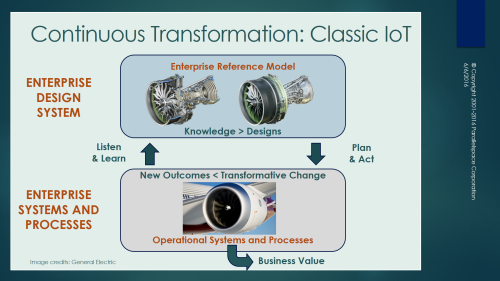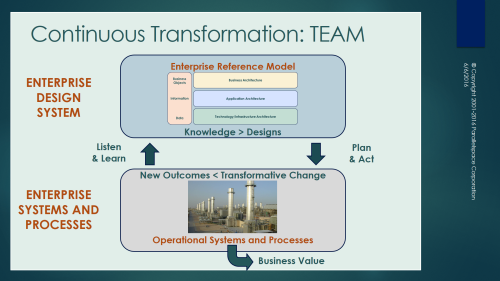Monthly Archives: June 2016
MS Azure is a bit of a bucket of bolts …very good bolts …but relative to the other IoT vendors, a bucket of bolts.
Michael Herman: Yes, there’s lots of “stuff” but I don’t see any content that targets Architects in the same effective ways that the [other vendor] content does. MS Azure is a bit of a bucket of bolts …very good bolts …but relative to the other IoT vendors, a bucket of bolts. Where’s the equivalent of a Google map that shows me the least cost or least complexity or hyper-performant architectures for receiving events, processing them through an easily composable and implementable pipeline of post-processing steps, and then persist the results and make them available through Power BI? …without constantly having to dig through the bucket or using Web Jobs as band-aids between every pair of Azure services?
Microsoft: Michael – are these more of what you had in mind:
https://azure.microsoft.com/en-us/documentation/articles/iot-suite-remote-monitoring-sample-walkthrough/
https://azure.microsoft.com/en-us/documentation/articles/iot-suite-predictive-walkthrough/
The Azure IoT Suite preconfigured solutions are actually implementations of the IoT Suite Reference Architecture you refer to above.
Thanks for the feedback, we’re actually discussing having more of an architectural center right now internally – can you provide more information on what you’d like to see?
Michael Herman: What does Nirvana look like? An Expedia-like traveling booking experience for all of Microsoft Azure where I provide my departure point, destination(s), and all the points in between (stopovers) and Microsoft produces a series of “flight options” (detailed architectures with *diagrams* and customizable blueprint/recipe documentation) where each option is differentiated by Azure cost, complexity, and performance …just like booking a flight. I get to choose the option (aka architecture) that suits my requirements and budget. Simple 😉
Filed under Uncategorized
Subject: MS Azure Services: Is there an overarching architectural vision?
From: Michael Herman (Parallelspace)
Sent: Monday, May 16, 2016 7:58 AM
To: Mark Russinovich; Scott Guthrie
Subject: MS Azure Services: Is there an overarching architectural vision?
Hi Mark and Scott,
I’m pretty sure that you and I have never met – although I’ve been building apps on the Windows platform since 1986 (version 0.989 of the SDK) and I worked for MSFT from 1996-2001 – mostly on the SharePoint team.
My question is: Is there an overarching architectural vision for the (complete) MS Azure platform? There doesn’t appear to be and I’ll give you an example in a second.
It appears like we’re back in 1996 when Billg/Microsoft finally “got the Internet” and every product group began a completely different, disconnected, uncoordinated effort to add “Internet” to their own little piece of software (e.g. HTML publishing mostly; support for some Internet protocols; etc.) Every day something new was being “released to the web (RTW)” and the Microsoft platform was a mess.
What I saw with Microsoft and the Internet in 1996 is happening all over again with the Microsoft Azure strategy: a disconnected and uncoordinated and not well documented strategy and implementation. Azure [as a strategic platform] is a mess.
My example: MS Azure services, MS IoT Suite, MS Cortana Suite, Azure Logic Apps.
The whole MS approach to Azure Event Hubs is extraordinary (good): Lightweight, inexpensive, brain-dead easy to use, largely unrestricted in terms of how Event Hubs can be used and the use cases they can support.
If I have some event data in an Event Hub, the very next thing I want to do is perform some post-processing of the event data – ideally staying with a streaming, hyper-scalable architecture. I [also] want to create an easily composable pipeline of activities that each perform some sort of processing of each event as the events progress through the pipeline. I want the pipeline activities to be easy to design and implement (e.g. kind of like PowerShell cmdlets but it doesn’t have to that specific implementation pattern but with a similar simple pattern that is easy to build upon).
But which MS Azure services have native support for consuming event data stored in an Azure Event Hub? …almost none
…except for Azure Stream Analytics. But what about Azure Data Factory? What about Azure Logic Apps? Are there other Azure Services I should be considering? …without having to build and manage [several] custom Azure WebJobs and use all sorts of intermediate Azure storage just to connect the applicable Azure services together?
Of the 3 options I listed, you chose the one, Azure Stream Analytics, that has [the] most baroque programming model (some SQL derivation). None of the latter two have any native support for event data stored in an Event Hub and they are a lot easier to use than Stream Analytics SQL scripts.
Where is the Azure documentation that is targeted at Architects?
The MS IoT Suite team has started a good MS IoT Reference Architecture document: http://download.microsoft.com/download/A/4/D/A4DAD253-BC21-41D3-B9D9-87D2AE6F0719/Microsoft_Azure_IoT_Reference_Architecture.pdf
Where is the consistent set of similar documents for the other collections of MS Azure services? Where is the overarching MS Azure architecture document?
Given a starting point and a goal (and some intermediate subgoals), where is the “Google Map” of all of the possible connections and routings across all of the MS Azure services?

Can you help?
Best regards,
Michael Herman (Toronto)
Filed under Uncategorized
NASA Apollo 11 Flight Plan – July 1, 1969
Filed under Enterprise Architecture, General, Space Flight
What’s the difference between improving the design and operation of an aircraft engine vs. an enterprise?
Answer: Nothing
Continuous Transformation is a key principle of the Progressive Enterprise Architecture Model (PEAM); part of the practice of Total Enterprise Architecture Management (TEAM).
Best regards,
Michael Herman (Toronto)
Parallelspace Corporation
Parallelspace Mentoring and Remediation Services for Microsoft Azure IoT Suite
Parallelspace Mentoring and Remediation Services for Microsoft Azure IoT Suite is a coaching and consulting service targeted at Microsoft customers and partners who are evaluating or implementing solutions based on the Microsoft Internet of Things (IoT) Suite on top of the Microsoft Azure platform.
For more details, contact:
Michael Herman
Principal Architect
Parallelspace Corporation
mwherman@parallelspace.net
(416) 524-7702
Filed under Uncategorized
Parallelspace TEAM™ Total Enterprise Architecture Management
Parallelspace TEAM™ (Total Enterprise Architecture Management) is an automated enterprise solution for creating and maintaining enterprise architecture models of large, medium and small organizations. Parallelspace TEAM supports the Parallelspace Continuous Transformation framework to enable the direct connection between your enterprise reference models and line-of-business systems and processes. Parallelspace TEAM is a cloud-based solution the leverages Microsoft Azure for event management, communications, storage, analysis, visualization and reporting.
For more details, contact:
Michael Herman
Principal Architect
Parallelspace Corporation
mwherman@parallelspace.net
(416) 524-7702
Filed under Uncategorized




